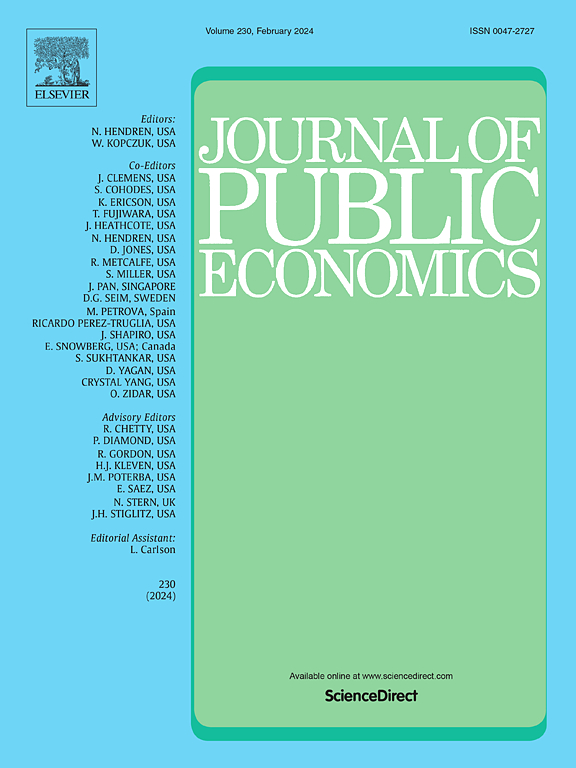失业和税收设计
IF 4.8
1区 经济学
Q1 ECONOMICS
引用次数: 0
摘要
本文研究了匹配摩擦使工人在高工资和低失业风险之间进行权衡的环境下的最优所得税。较高的边际税率会改变这种权衡,有利于低失业风险,而较高的税负或失业福利则会产生相反的效果。失业率的变化会产生财政外部性,从而修改最优税收公式。一项针对美国经济的校准工作表明,如果考虑到失业对税收的反应,最优边际税率和就业税几乎不会受到影响。本文章由计算机程序翻译,如有差异,请以英文原文为准。
Unemployment and tax design
This paper studies optimal income taxation in an environment where matching frictions generate a trade-off for workers between high wages and low unemployment risk. A higher marginal tax rate shifts the trade-off in favor of low unemployment risk, whereas a higher tax burden or unemployment benefit has the opposite effect. Changes in unemployment generate fiscal externalities, which modify optimal tax formulas. A calibration exercise to the US economy suggests that optimal marginal tax rates and employment taxes are hardly affected if unemployment responses to taxation are taken into account.
求助全文
通过发布文献求助,成功后即可免费获取论文全文。
去求助
来源期刊

Journal of Public Economics
ECONOMICS-
CiteScore
14.10
自引率
2.00%
发文量
139
审稿时长
70 days
期刊介绍:
The Journal of Public Economics aims to promote original scientific research in the field of public economics, focusing on the utilization of contemporary economic theory and quantitative analysis methodologies. It serves as a platform for the international scholarly community to engage in discussions on public policy matters.
 求助内容:
求助内容: 应助结果提醒方式:
应助结果提醒方式:


